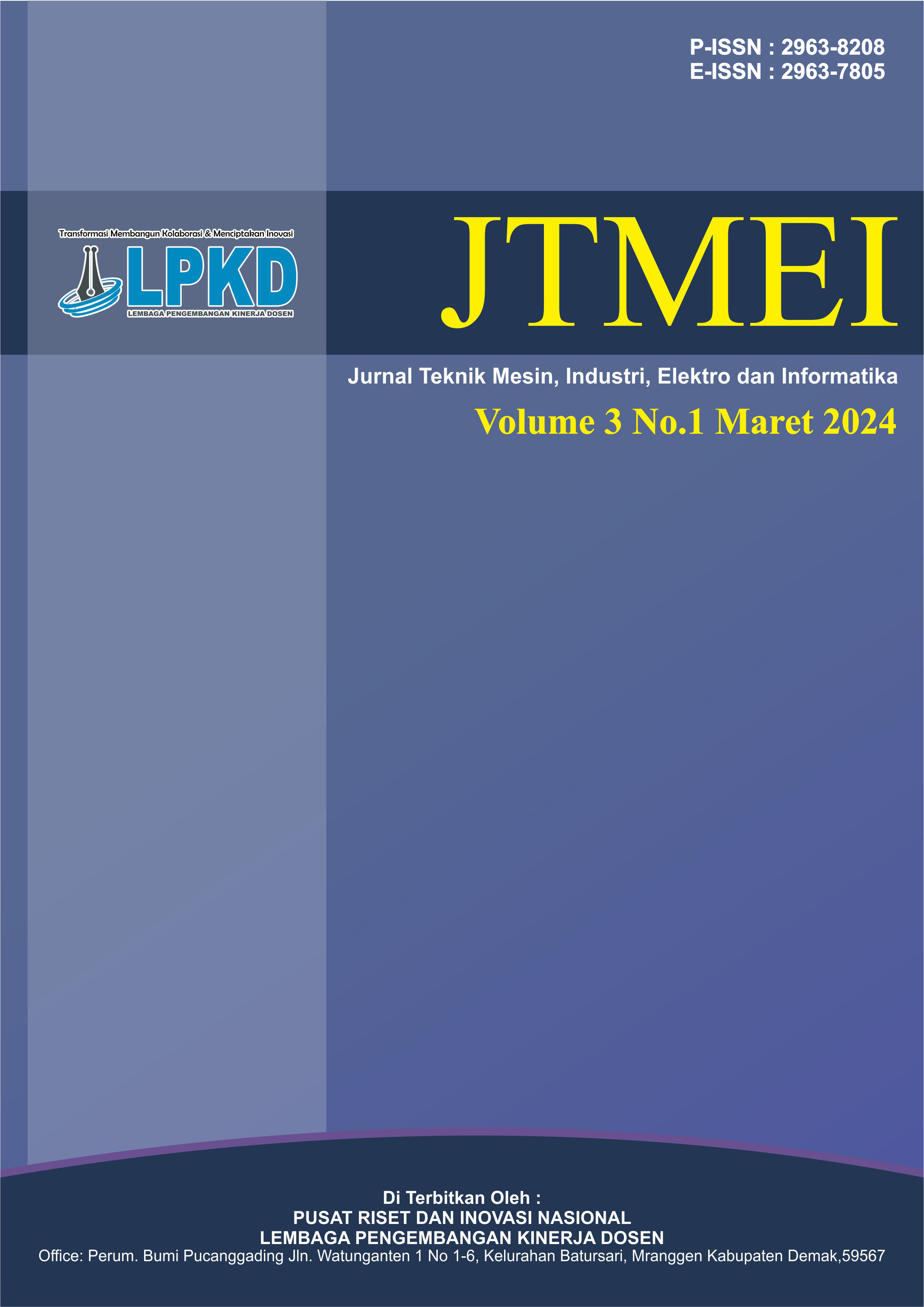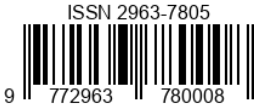Optimalisasi Perencanaan Instalasi Pengolahan Air Limbah (IPAL) Kegiatan Industri Rumah Potong Ayam (RPA) PT X Di Daerah Jombang
DOI:
https://doi.org/10.55606/jtmei.v3i1.3280Keywords:
Waste Water, Wastewater Treatment Plant, OptimizationAbstract
The industrial activities of chicken slaughterhouse and meat processing by PT X generate waste that needs to be treated through a Wastewater Treatment Plant (WWTP) during the operational processes. However, the WWTP of PT X indicates a need for improvement in wastewater treatment performance to optimize the reduction of pollutant parameters in the wastewater generated by PT X’s industrial operations. The performance evaluation of PT X’s WWTP is conducted by examining technical aspects, ensuring that the WWTP can operate optimally, and the effluent wastewater meets the standard quality requirements. Therefore, the quality of the effluent can be assured to protect the sustainability of natural resources in the surrounding area, especially the water resources in the vicinity of PT X’s industrial activities. Based on the technical analysis results, the optimization of treatment standards at PT X’s Wastewater Treatment Plant (WWTP) is planned by adding an Biofilter Aeration unit to ensure that the quality of the generated waste meets the standards.
Downloads
References
Anandita, S. H. (2019). Perencanaan Instalasi Pengolahan Air Limbah (Ipal) Pada Rumah Pemotongan Ayam (Rpa) Di Wilayah Sleman, Yogyakarta. Universitas Islam Indonesia Ekonomi Islami, variabel X, 46–47. https://dspace.uii.ac.id/bitstream/handle/123456789/25104/%5BCetak Perpusnas%5D Ekonomi Islami Solusi Tantangan Zaman.pdf?sequence=1&isAllowed=y#page=71
Agung, W., Putra, S., Musalamah, S., & Rahmayanti, H. (2020). Planing Structure Installation of Water Treatment Wastewater Slaughterhouse Using Activated Sludge Method (Case Study RPH Dharma Jaya Pulo Gadung East Jakarta). Jurnal Pendidikan Teknik Dan Vokasional, 3(1), 40–48.
Alfasyimi, M. (2022). Pengolahan Limbah Cair Organik Rumah Pemotongan Ayam (RPA) Dengan Metode Fitoremediasi Dengan Tumbuhan Klambang.
Azmi, K. N., Danumihardja, I. G., & Said, N. I. (2019). Aplikasi Teknologi Pengolahan Air Limbah Domestik Menggunakan Kombinasi Biofilter Aerobik Media Plastik Sarang Tawon Dan Biofilter Media Kerikil Dengan Aliran Ke Atas. Jurnal Air Indonesia, 10(2), 42–51. https://doi.org/10.29122/jai.v10i2.3760
Dimara, Chrisye F. Y. dan Cindy J. Supit, M. I. Jasin. (2020). “Perencanaan Sistem Jaringan Pengolahan Air Limbah Domestik di Kelurahan Banjer Ling.V Kecamatan Tikala. Jurnal Sipil Statik Vol.8 No.3. Hal 431-442
Ikbal, I. (2018). Peningkatan Kinerja Ipal Lumpur Aktif Dengan Penambahan Unit Biofilter (Studi Kasus Ipal Pasaraya Blok M, Kapasitas 420 M3/Hari). Jurnal Air Indonesia, 9(1), 1–14. https://doi.org/10.29122/jai.v9i1.2471
Peraturan Gubrnur Jawa Timur Nomor 72 Tahun 2013 Tentang Baku Mutu Air Limbah Bagi Industri Dan/Atau Kegiatan Usaha Lainnya
Sari, Y. S. (2018). Efisiensi Air Bersih Dengan Penggunaan Kembali Air Olahan Ipal Sistem Bio Oksidasi Di Sektor Perhotelan. Envirosan, Volume I Nomor 2
Sah, Y. W., Santosa, B., & Putro, H. (2022). Optimalisasi Instalasi Pengolahan Air Limbah (Ipal) Menggunakan Gps-X. Jurnal Ilmiah Desain & Konstruksi, 21(2), 173–186.
Suciana, I., Utomo, K. P., & Pramadita, S. (2023). Perencanaan Instalasi Pengolahan Air Limbah (IPAL) Rumah Potong Ayam PD.X. Jurnal Rekayasa Hijau, 7(1), 37–48. https://doi.org/10.26760/jrh.v7i1.37-48
Yulfiah, Y. (2022). Optimalisasi Kinerja Instalasi Pengolahan Air Limbah Industri PT. X Untuk Perlindungan Sumberdaya Air. Jurnal Sumberdaya Bumi Berkelanjutan (SEMITAN), 1(1), 7–12.
Downloads
Published
How to Cite
Issue
Section
License
Copyright (c) 2023 Jurnal Teknik Mesin, Industri, Elektro dan Informatika

This work is licensed under a Creative Commons Attribution-NonCommercial-ShareAlike 4.0 International License.








